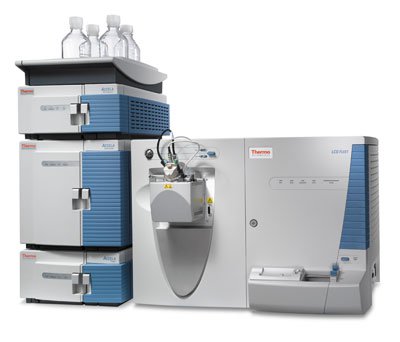Mass spectrometry is a highly sensitive and selective technique. However, many modern applications require isolating target analytes from complex biological matrices comprising multiple distinct molecules. Generally, mass spectrometry alone cannot fulfill these needs as it differentiates compounds based on the mass-to-charge ratio. This feature, at times, may not be practical and deemed insufficient, for example, thousands of compounds may have a molecular mass of around 250 daltons. Hence, researchers need an additional separation technique before presenting the molecules into the mass spectrometer. Liquid chromatography is an ideal tool that mass spectrometry service companies prefer for analyzing biomolecules.
Liquid chromatography-mass spectrometry (LC-MS) combines two selective and sensitive methods for isolating and measuring target analytes in highly complex biological samples. The LC component differentiates molecules based on the physicochemical properties, while MS uses the mass to charge the ratio. This duality makes LC-MS assays a powerful tool for mass spec service providers. From drug impurity testing to NAb assays, LC-MS systems have multiple applications. However, robust LC-MS method development is crucial for generating reliable and accurate results. Hence, the current article dives into LC-MS method development and analytical protocols.
Robust LC-MS method development for reliable results
Developing a robust LC-MS method is an iterative process that can often be time-consuming for challenging assay requirements. Generally, achieving adequate selectivity and sensitivity are the primary demands researchers should focus on while developing quantitative LC-MS assays. Both these factors are crucial at every stage of drug development and are often co-dependent for acquiring desired assay performance.
Early research and planning are crucial as small pieces of information acquired early during method development can save frustration later in the experimental procedure. The primary data required falls into four categories:
-
Structural and chemical data about the analyte of interest
-
Information about the sample type and experimental conditions
-
Reference data about assays developed in the past
-
Applicable regulatory and industry guidelines
The primary step in LC-MS method development is identifying whether the analyte of interest is ionizable. This step usually includes introducing a constant analyte stream into the ion source and optimizing mass spectrometer parameters such as ionization voltage and gas flow.
The second step is developing a robust chromatography method. It is critical for acquiring adequate sensitivity and selectivity. Usually, a suitable starting point is identified during the initial planning and research stage. In the absence of a predefined method, one may start the method development using the logD of the target analyte.
After determining liquid chromatography conditions, researchers often turn towards the mass spectrometer for optimizing MS parameters that are dependent on the flow rate and composition of the mobile phase. This step helps improve reproducibility and achieve optimum sensitivity.
Sample preparation and extraction is one of the most technically challenging steps in LC-MS method development. It includes removing matrix interference while increasing analyte recovery. Some extraction techniques include solid-phase extraction and protein precipitation. It is vital to identify the extent of method development required to fulfill its purpose. An ideal method will be adequate for its intended applications.












